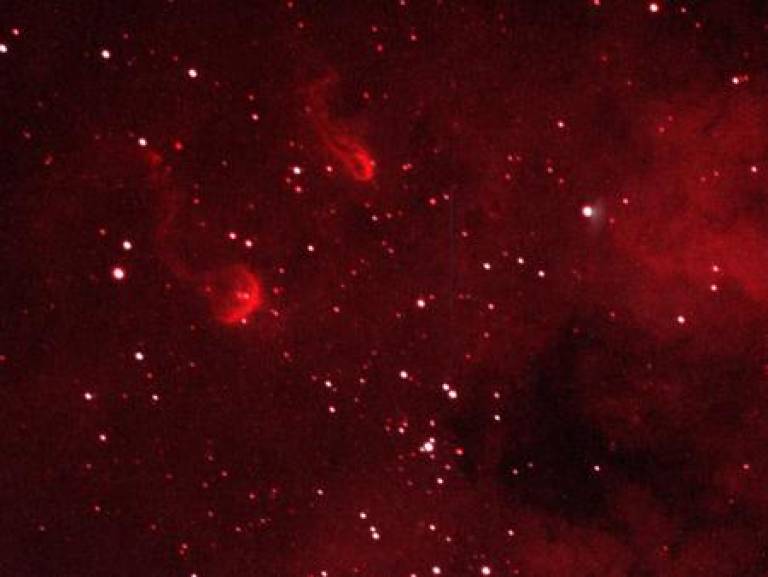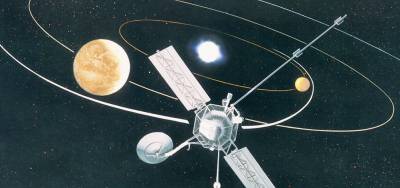The Tadpole Nebula
19 May 2014

The vast majority of the stuff of the universe is hydrogen. Unlike the heavier elements, which were synthesized in supernova explosions, the universe's hydrogen was produced in vast quantities in the Big Bang. While it is the heavier elements that make the complex chemistry of the universe possible, it is hydrogen that forms stars, and gives us the light, heat and energy we need to live.
Stars form through the gravitational collapse of clouds of hydrogen gas. As the gas forms stars, it heats up and its pressure increases, and nuclear fusion eventually kicks off. The young stars then heat up and irradiate the cloud around them, initially making it glow red like a neon sign, then eventually blowing it away, leaving only stars behind.
This shot of star-forming region IC 410 - better known as the Tadpole Nebula - shows this brightly-coloured stage of the star formation process. Star cluster NGC 1893 is forming within the cloud and will, eventually, make the remaining hydrogen disperse into space. But for now, it glows brightly in a tell-tale shade of red.
The picture was taken at the University of London Observatory, a UCL facility in North London. The observatory hit the headlines earlier this year when undergraduate students and lecturer Steve Fossey discovered a supernova during a practical astrophysics class.
Credit: University of London Observatory/UCL Physics & Astronomy
Links
High resolution image
This image can be reproduced freely providing the source is credited
 Close
Close




